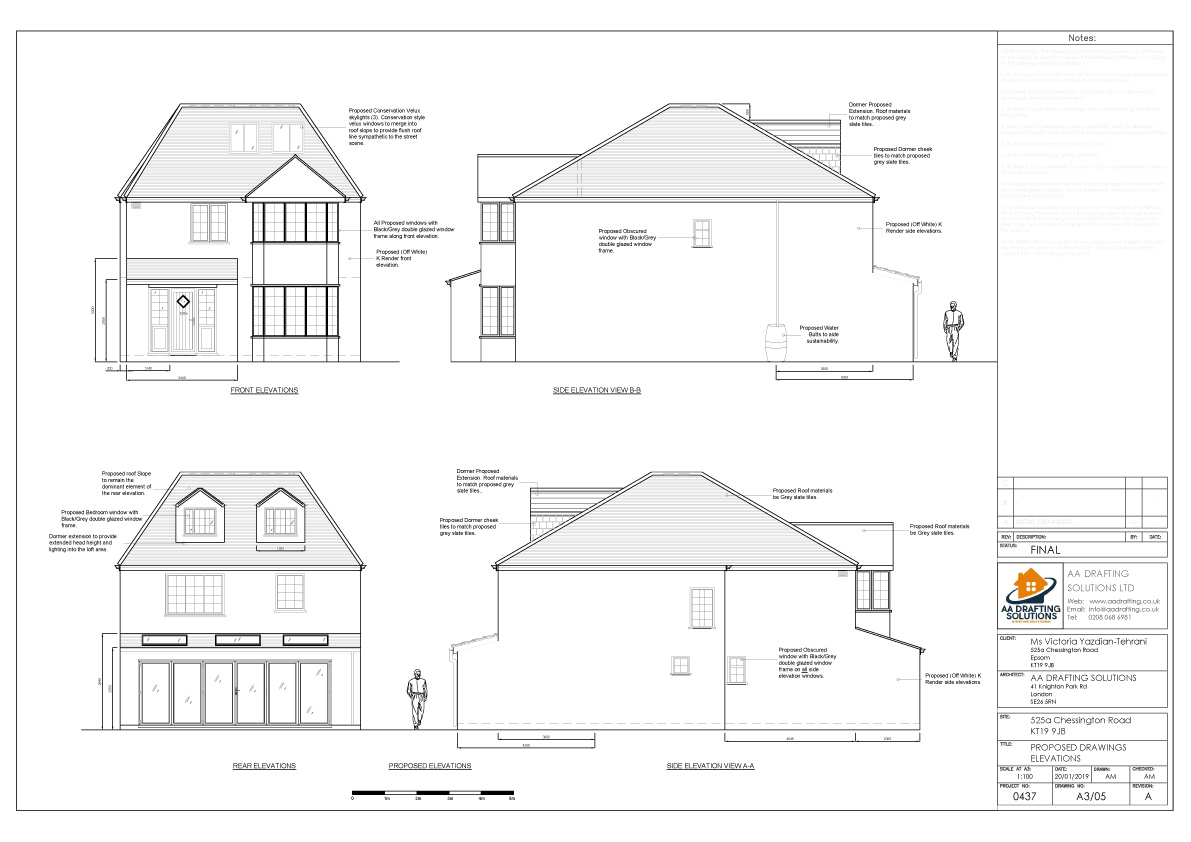
Building a home or renovating a property isn’t just about design and aesthetics—it must also meet strict legal and safety standards. This is where building regulation drawings come in. These detailed technical drawings outline how a structure will comply with building codes, covering everything from structural integrity to fire safety, insulation, drainage, and accessibility.
Unlike planning permission drawings, which focus on appearance and layout, building regulation drawings ensure a project meets construction standards set by local authorities. Without them, builders may face delays, fines, or even be required to redo work that doesn’t comply.
For homeowners, architects, and developers, these drawings are essential. They serve as a blueprint for construction, guiding builders while ensuring the project meets legal, environmental, and safety regulations. Whether for a new build or an extension, having properly prepared building regulation drawings is a critical step in securing approval and completing a project successfully.

What Are Building Regulation Drawings?
Building regulation drawings are detailed technical documents that demonstrate how a construction project complies with building codes and safety regulations. They provide essential information about structural integrity, fire safety, insulation, drainage, ventilation, and accessibility. These drawings are required to obtain approval from local authorities before construction can begin.
Many people confuse building regulation drawings with planning permission drawings, but they serve different purposes. Planning drawings focus on the external appearance and layout of a building, ensuring it fits within zoning laws and neighborhood aesthetics. In contrast, building regulation drawings deal with technical and safety aspects, ensuring the structure is built to a legally approved standard.
These drawings are required for new builds, extensions, major renovations, and structural alterations. Even projects that don’t need planning permission may still require building regulation approval. Failing to obtain approval can lead to delays, legal penalties, or costly modifications. Having accurate and approved building regulation drawings ensures a smoother construction process and compliance with legal standards.
Legal Requirements & Compliance
The UK Building Regulations set the minimum construction standards for safety, energy efficiency, and accessibility. These regulations are updated periodically, with the latest changes focusing on sustainability, fire safety, and insulation standards to improve energy performance in buildings.
Compliance ensures that structures are:
- Safe: Meeting fire resistance, structural stability, and emergency exit requirements.
- Energy Efficient: Adhering to insulation and ventilation standards to reduce energy consumption.
- Accessible: Providing suitable access for people with disabilities, including ramps and wider doorways.
Non-compliance can lead to serious consequences. Local authorities can issue enforcement notices, requiring changes or even demolition of non-compliant structures. Homeowners may struggle to sell properties that don’t meet regulations, and insurers may refuse coverage for buildings with unapproved modifications.
Building regulations vary across England, Scotland, and Wales, with each region having specific requirements. For example, Scotland has stricter energy efficiency standards, while Wales has additional sustainability measures. Before starting a project, it’s crucial to check local building regulations to ensure full compliance.
Key Components of Building Regulation Drawings
Building regulation drawings are more than just blueprints; they provide a detailed technical framework that ensures compliance with construction laws. Each drawing includes specific components to address safety, energy efficiency, and structural integrity.
General Arrangement Plans
These plans provide an overview of the building layout, including floor plans, elevations, and cross-sections. Floor plans outline room dimensions, door and window placements, and key structural elements. Elevations show the exterior from different angles, while sections provide a vertical cut-through of the building, detailing ceiling heights, foundation depth, and roof structure.
Construction Details
This section specifies materials and construction methods to ensure durability and compliance with regulations. It includes insulation requirements, damp-proofing methods to prevent moisture damage, and structural details like beam sizes and foundation specifications. Proper documentation of these elements helps prevent costly issues during construction.
Fire Safety & Escape Plans
Fire regulations require buildings to have adequate fire resistance and escape routes. Drawings must show the placement of smoke detectors, fire alarms, emergency exits, and fire-rated doors. High-risk areas, such as kitchens and stairwells, must comply with stricter fire protection standards to ensure occupant safety.
Drainage & Waste Disposal Plans
Proper drainage is essential to prevent water damage and environmental issues. Plans must detail foul water disposal (sewage systems) and surface water drainage (rainwater runoff). Regulations ensure that drainage systems connect to public sewers or approved treatment systems and prevent flooding risks.
Ventilation & Energy Efficiency Requirements
To meet energy efficiency regulations, drawings include details on insulation, air circulation, and heat retention. U-values, which measure thermal performance, must be within approved limits to reduce heat loss. Mechanical ventilation, extractor fans, and natural airflow systems must also be accounted for.
Electrical & Plumbing Layouts
Electrical plans include wiring routes, socket placements, lighting, and circuit protection to meet safety codes. Plumbing layouts cover water supply lines, drainage pipes, heating systems, and boiler locations. Compliance with electrical and plumbing standards ensures that the building is both functional and safe for occupants.
Each of these components plays a vital role in ensuring a legally compliant, structurally sound, and energy-efficient building.
Who Prepares Building Regulation Drawings?
Building regulation drawings require technical expertise to ensure compliance with legal and safety standards. They are typically prepared by architects, structural engineers, and specialist consultants, depending on the complexity of the project.
Architects create detailed drawings that cover layout, materials, and compliance with building regulations. They ensure that the design meets structural, fire safety, and energy efficiency standards. Structural engineers focus on load-bearing elements, such as foundations, beams, and roof structures, ensuring the building is stable and safe. Specialist consultants, such as mechanical and electrical engineers, contribute to areas like ventilation, drainage, and heating systems.
While homeowners can draft their own drawings for small projects, professional input is strongly recommended. Local authorities often require professionally prepared documents to ensure compliance. Mistakes in self-prepared plans can lead to rejections, costly revisions, or unsafe construction. Hiring an expert ensures accuracy, speeds up approval, and reduces the risk of future issues.
The Approval Process & Submissions
Before construction can begin, building regulation drawings must be submitted for approval. This ensures that the project meets legal and safety requirements. There are two main ways to apply: Full Plans Application and Building Notice Application, each suited to different project types.
Full Plans Application vs. Building Notice Application
A Full Plans Application involves submitting detailed architectural and structural drawings, along with supporting documents. The local authority or an approved inspector reviews the plans for compliance before work starts. This method provides greater certainty since issues can be identified and resolved in advance. It is required for larger projects, such as new builds and commercial developments.
A Building Notice Application is a simpler process that allows work to begin without submitting full plans. Instead, compliance is checked through site inspections. This is faster but carries more risk, as any non-compliance found during construction must be corrected, potentially leading to delays and extra costs. This method is typically used for minor alterations or domestic extensions.
Where to Submit & Approval Timeline
Applications can be submitted to the Local Authority Building Control (LABC) department or an Approved Inspector, a private company authorised to oversee compliance. Local authorities generally take 5 to 8 weeks to approve Full Plans Applications, while Building Notice Applications allow immediate work but require on-site inspections throughout the project.
Fees & Potential Delays
Submission fees vary based on project size and complexity, typically ranging from £200 to over £1,000. Additional fees may apply for multiple inspections. Delays often occur due to incomplete applications, missing details, or changes requested by inspectors. To avoid setbacks, it’s crucial to submit accurate drawings and respond promptly to any queries.
Common Challenges and Mistakes to Avoid
Preparing building regulation drawings requires precision and up-to-date knowledge of construction laws and safety standards. Errors in the process can lead to delays, additional costs, or even project rejection. Here are some of the most common mistakes and how to avoid them.
Incorrect or Missing Details
One of the most frequent issues in building regulation drawings is the omission of key details, particularly in structural elements, fire safety, and ventilation systems. Incomplete plans can result in approval delays or costly on-site corrections. Drawings must clearly outline load-bearing structures, fire escape routes, smoke detector placements, and adequate ventilation measures to meet compliance requirements.
Ignoring Local Authority Requirements
Building regulations can vary by location, and failing to align plans with specific local authority guidelines can lead to rejection. Each council may have unique policies, especially concerning energy efficiency, accessibility, and drainage. Before submitting plans, it’s essential to review local regulations and consult with the relevant authorities.
Using Outdated Building Regulations
Building codes change over time, particularly in response to advancements in safety and sustainability. Relying on outdated standards can result in non-compliance, requiring expensive revisions. It’s crucial to stay updated with the latest UK Building Regulations and ensure all plans reflect current legal requirements.
Failing to Coordinate with Other Professionals
A lack of communication between architects, structural engineers, surveyors, and contractors often leads to discrepancies in the drawings. For example, if a structural engineer makes adjustments to the foundation plan without updating the architectural drawings, it can create conflicts during construction. Regular collaboration ensures that all design aspects align, minimising errors and approval delays.
Avoiding these common mistakes ensures a smoother approval process, fewer revisions, and a legally compliant build.
Digital Advancements in Building Regulation Drawings
Technology has significantly improved the way building regulation drawings are created, submitted, and reviewed. Digital tools now allow for greater accuracy, faster approvals, and better project coordination.
Building Information Modeling (BIM)
One of the biggest advancements is the use of Building Information Modeling (BIM), which enables the creation of highly detailed, data-rich 3D models. Unlike traditional 2D drawings, BIM provides structural, mechanical, and energy performance data, helping architects and engineers identify potential compliance issues before construction begins.
Online Submissions & E-Approvals
Many local councils now offer online submission portals, streamlining the approval process. Digital submissions allow for faster reviews, real-time tracking of applications, and quicker responses to requested changes. Some councils also provide e-approvals, reducing paperwork and speeding up project timelines.
Software for Drafting & 3D Visualisation
Popular drafting software such as AutoCAD, Revit, and SketchUp enables professionals to create highly accurate and detailed plans. These programs allow for precise measurements, easy modifications, and better collaboration between architects, engineers, and contractors.
Additionally, 3D visualisation tools help stakeholders, including clients and inspectors, better understand the design. This can improve communication, reduce misunderstandings, and increase the likelihood of quicker approvals.
By integrating these digital advancements, the building regulation process becomes more efficient, accurate, and adaptable to modern construction needs.
Cost of Preparing Building Regulation Drawings
The cost of preparing building regulation drawings varies depending on the size, complexity, and type of project. For residential projects, prices typically range from £500 to £2,500, while commercial projects can cost £3,000 or more, depending on the level of detail required.
Factors Influencing Cost
Several factors affect the overall cost, including:
- Project Complexity: A simple home extension costs less than a multi-story commercial building requiring extensive structural calculations.
- Size of the Building: Larger buildings require more detailed drawings, increasing design time and costs.
- Location: Fees may be higher in cities like London due to increased labor and consultancy rates.
Reducing Costs Without Compromising Quality
To manage costs, homeowners and developers can:
- Use pre-approved designs where possible to avoid custom drafting fees.
- Hire professionals offering fixed-price packages to prevent unexpected expenses.
- Ensure all required details are included in the first submission to avoid costly revisions.
Investing in accurate and compliant drawings prevents costly delays and corrections during construction.

Final Words
Accurate and compliant building regulation drawings are essential for ensuring that any construction project meets legal, safety, and structural standards. They serve as a blueprint for builders, inspectors, and engineers, reducing the risk of costly mistakes and delays.
By adhering to current regulations, these drawings help create safe, energy-efficient, and durable buildings. Whether for a home extension or a commercial development, seeking professional guidance from architects, structural engineers, or consultants ensures a smooth approval process.
Investing in well-prepared drawings not only speeds up approvals but also provides long-term peace of mind, ensuring a project is built correctly, safely, and legally.

Contact
Office Address
Opening Hours
Fri — 9am – 5pm
Sat — 9am – 2pm
Sun — Closed




